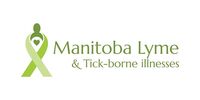Co-Infections
The Rule - Not the Exception
Ticks can carry more than one disease at a time, so it’s possible and very likely to contract multiple infections from just one bite. It is safe to say that co-infections are generally the rule rather than the exception and can sometimes even be the primary infection with lyme disease being the secondary infection. Like Lyme, many tick-borne infections have flu-like symptoms – such as fever and headache – which makes diagnosis difficult. Treatment for Lyme is more complicated when one or more co-infections are present. Patients with co-infections often don’t respond well to the usual treatments, and it takes an experienced doctor to properly identify and treat each tick-borne infection. Co-infections generally result in more severe illness, more symptoms, and a longer recovery.
|
Other Tick-Borne Diseases
Manitoba physicians have been advised by Manitoba Health as of the Spring of 2015, that cases of Anaplasmosis & Babesiosis have also been found in the province, and are now reportable. Emerging infections include Borrelia Miyamotoi which does not present with an EM rash, Borrelia Mayonii and Powassan Virus where the causative agent can be transmitted within 15 minutes of attachment. It is important to note that some of these other co-infections can be transmitted by other biting vectors besides ticks.
More information on symptoms of these co-infections, diagnosis and treatment can be obtained on the Canadian Lyme Disease Foundation (CanLyme) website. |
co-existing & community
based infections To further complicate the treatment and recovery process from tick-borne diseases, co-existing infections (infections that may already exist and / or are dormant in the body) can become reactivated when the body is under stress or trauma such as is the case when dealing with tick-borne infections. An example of one of many would be a reactivation of a previous Epstein Barr infection. To make matters worse, once our immune system becomes compromised, we also become more susceptible to community-based infections such as the common cold, flu and upper respiratory infections. These along with any other underlying health issues can make the road to recovery very challenging. |
|
Disclaimer - Although members of Manitoba Lyme may provide information on various treatment protocols, they do not promote or recommend any one treatment or product for Lyme Borreliosis and associated diseases, nor take responsibility for any actions individuals take in using such treatments or products. Please always be sure to discuss any treatment protocol with your doctor.
|
Contact Us
Email [email protected] |
Proudly powered by Weebly

